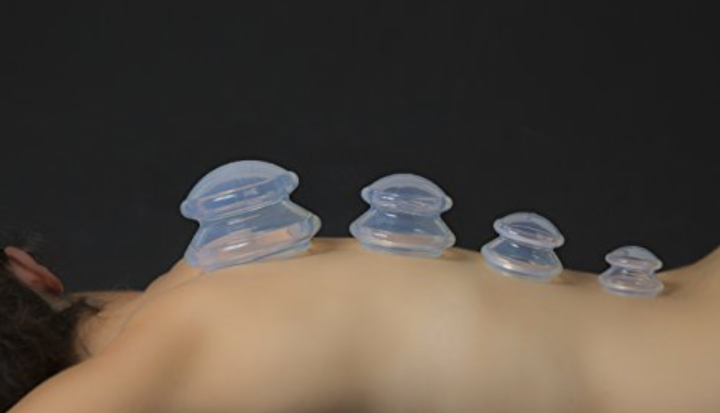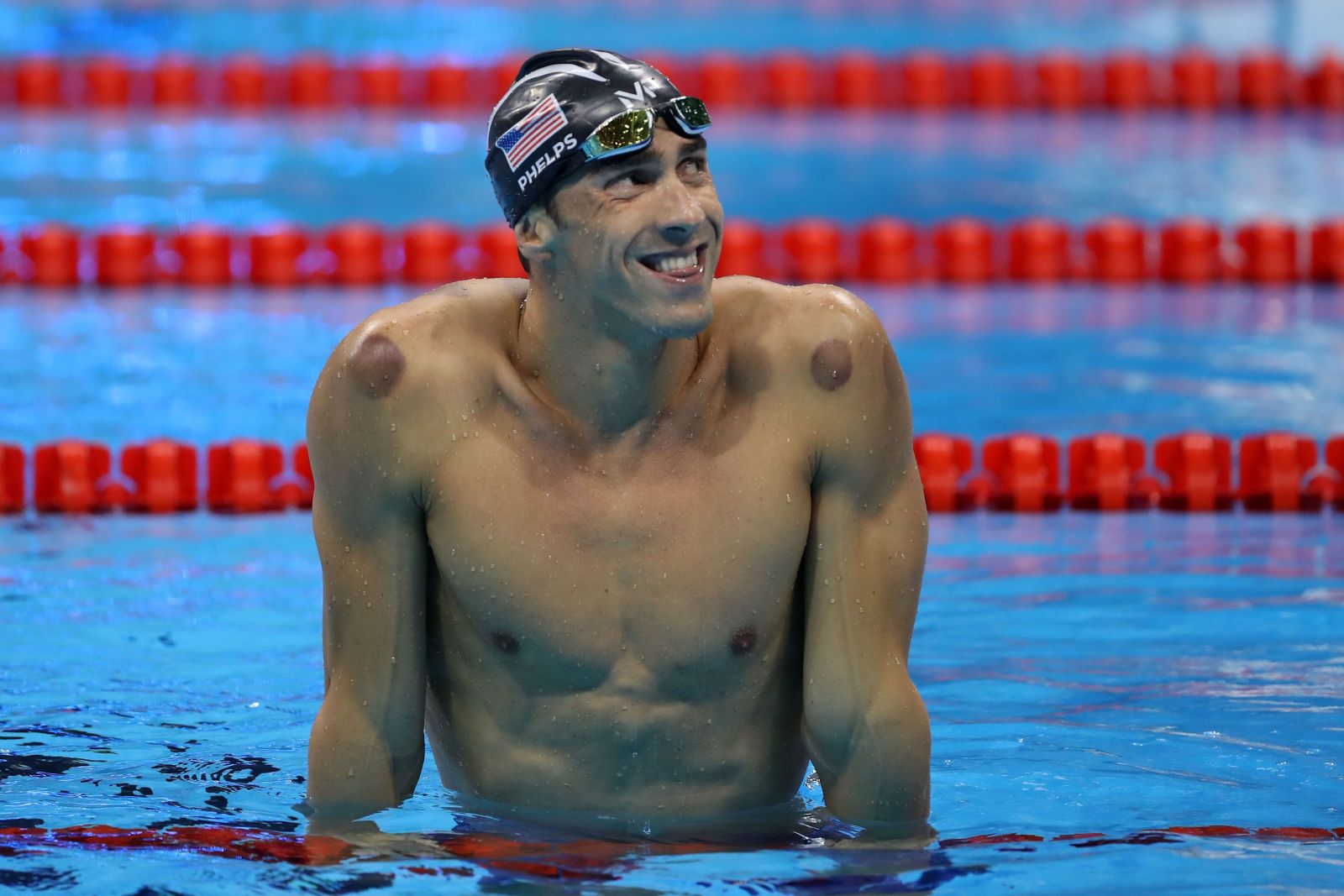What is Cupping Therapy?
By Esther Utley, LMT
March 2021

What is Cupping Therapy?
As the name suggests, Cupping Therapy uses a combination of negative pressure and massage movements with the use of a suction device. Cupping therapy is a Negative Pressure technique that is used to achieve a wide range of responses, ranging from extreme relaxation to therapeutic.
A cup is positioned at the area to be treated and, depending on the type of cups being used, a vacuum is created within the cup to draw the underlying tissue into the cup. The suction level can range from light to heavy, and the movements performed by the therapist can be either stimulating or sedating, depending on the needs of the client. The produced vacuum creates a suction effect that increases blood circulation to the local area, relaxes muscle tissue and releases a myriad pain causing factors.
Cupping Therapy softens tight muscles, tones attachments, loosens adhesions and lifts connective tissue by creating suction and negative pressure. This same suction also brings hydration and blood flow to body tissues, and drains excess fluids by opening lymphatic pathways (a vital part of the immune system). Cupping therapy is very versatile and can be modified to achieve a variety of techniques ranging from subtle lymphatic drainage to deep tissue release.
Various people have employed the use of negative pressure throughout history. Cupping traces back further than 5,000 BC and its true origin remains obscure. Cupping was originally used to dredge toxic blood from the body and to pull venom from bites. The observation that cupping can move fluids in the body has enhanced modern healthcare tremendously. Cupping Therapy Massage has finally become accepted in the U.S. so you can add cupping to any acupuncture, deep tissue, swedish or hot stone treatment to enhance and accelerate treatment.
 Why Does Cupping Leave Marks? A common misinterpretation of cupping concerns the discoloration that can occur during treatment. Often when pathologic factors and stagnant fluids (blood and lymph) are dredged up during treatment, discoloration will appear on the skin. This is the therapeutically desired effect – the more this is visible, the greater the level of stagnation that has been removed. “Bruising” is caused by impact trauma with breakage of capillaries and reactionary rush of fluids to the damaged area from the tissue compression/injury, and there is no compression in properly employed suction cup therapy, so bruising should not occur. Although it is quite common during stationary Cupping (left static for 5 – 20 minutes) to achieve dramatic marks or discolorations, less aggressive action while moving the cups can minimize the intensity and duration of these marks, and any discoloration should fade over a few days and should not be painful.
Why Does Cupping Leave Marks? A common misinterpretation of cupping concerns the discoloration that can occur during treatment. Often when pathologic factors and stagnant fluids (blood and lymph) are dredged up during treatment, discoloration will appear on the skin. This is the therapeutically desired effect – the more this is visible, the greater the level of stagnation that has been removed. “Bruising” is caused by impact trauma with breakage of capillaries and reactionary rush of fluids to the damaged area from the tissue compression/injury, and there is no compression in properly employed suction cup therapy, so bruising should not occur. Although it is quite common during stationary Cupping (left static for 5 – 20 minutes) to achieve dramatic marks or discolorations, less aggressive action while moving the cups can minimize the intensity and duration of these marks, and any discoloration should fade over a few days and should not be painful.
As treatments accumulate and the cause of stagnation and buildup has been drained (usually by the 3rd or 4th treatment) no discoloration is likely to occur at all, even though each time the cupping may have been focused on the same area for the same duration and with the same amount of negative pressure. This is the result of having internal stagnant fluid systematically purged. This is helpful in taking pressure off of joints and organs in the body by pulling this fluid and “creating space” for the tissue.
Cupping Marks & Post Treatment Care
 When circulation is sluggish or compromised in an area of the body, the cells receive insufficient oxygen, and there can be a local build up of waste products. Cupping can help by taking pressure off of entrapped nerves, soft tissue, blood and lymphatic vessels. The deposits dissipate from a few hours up to several weeks, depending on the amount of stagnation and the patient’s post treatment activities.
When circulation is sluggish or compromised in an area of the body, the cells receive insufficient oxygen, and there can be a local build up of waste products. Cupping can help by taking pressure off of entrapped nerves, soft tissue, blood and lymphatic vessels. The deposits dissipate from a few hours up to several weeks, depending on the amount of stagnation and the patient’s post treatment activities.
Usually, the practitioner will see the greatest amount of deposits being drawn to the surface in the first few treatments – this is a good thing. The deposits will lessen in intensity as the deeper issues are resolved and the stagnations have been dredged up and flushed out via the body’s own circulatory systems and expulsion from the pores. Sweating is a great after treatment follow up to accelerate circulation, I recommend hot showers, baths, sauna/steam or moderate exercise like a brisk walk. Although the marks look painful, they are not. Patients usually feel an immediate sense of relief.
For four to six hours following a treatment you should avoid any strenuous activity but if you must do not make any changes to an already established exercise regime (do not add mileage, weight, add new movements), it is best to plan your treatment around a rest day and allow your body to absorb and properly respond to the bodywork. Cupping opens the pores and because of this the absorption of liniments, analgesics, plant hydrosols or essential oils will be aided. Stay hydrated and give your body some time to respond to the bodywork.
One last thing to know is when cupping is not indicated for you. Your practitioner will likely address this after going over your health intake but it is good to keep in mind that the effects of different forms of bodywork vary and your current physical condition needs to be considered for your well being. This is a brief list contraindications to cupping: if you have any open wounds or active bleeding, if you are on blood thinners as this can cause severe bruising, if you have thin or fragile skin (cupping can still be practiced, but very lightly), if you are in kidney, liver or heart failure, if you suffer from hernias, deep vein thrombosis, ulcers, or cancer. Again, this is a brief list, so if you are unsure if this treatment is ok to ask your doctor and most definitely have a conversation with your practitioner about if cupping is right for you.
If you think that Cupping Therapy would be beneficial for you, please ask about it next time you are in for your massage! This information is provided from my personal experience as a practitioner utilizing cupping in tandem with massage therapy since 2009 and my views may differ from other practitioners utilizing this modality. I do not utilize cupping in the TCM modality and am not a TCM therapist personally but I highly value TCM and often work congruently with acupuncturists to achieve our clients wellness goals.
About the Author
Esther Utley LMT MA 00024089
Esther graduated from Heritage College in Colorado earning an AOS degree in the 1200 hour MT program in 2003 and has since worked in a variety of environments from five star resort spas to medical settings. She migrated to the Puget Sound area in 2005, she was drawn to the PNW because of how the culture values massage therapy in the medical field, it is such a joy to work with clients who truly value their health. She was thrilled to launch Guiding Star Massage Therapy PLLC in order to provide the highest level of care to her clients. Communication is the first step, "you can't take a road trip without looking at a map right?" She takes the time to understand where her clients are coming from and where they want to go. This is key to helping each individual achieve their goals.
Practicing in the Seattle area for the majority of her career has provided her with the opportunity to fine tune her skills working with postural disorders from being "stuck" in fixed positions at length due to our "tech culture", and repetitive strain injuries resulting from activities such as cycling, music/instruments, dancing, hiking and art. She is interested in looking at the least invasive possibility for treatment to a condition first (massage) and structuring a treatment plan around the results. In her “massage tool box” she has a variety of deep tissue and relaxation massage techniques, was certified in cupping massage in 2009, continues to learn about the neurofascial approach to nerve entrapment and is always interested in practicing effective techniques to help her clients with injury treatment, pain management and anxiety.
Esther lives in Edmonds, WA with her 16 year old dachshund Oona. They enjoy spending time outdoors, especially camping and fly fishing. Esther is also an artist and has recently achieved her Art Therapy Life Coaching certification and is excited to help others tap into their creativity to transform limiting beliefs.
Education & Trainings:
Associate of Occupational Studies - Heritage College 2003. Deep Tissue/Sports Massage, Medical massage, Neuromuscular Therapy, Clinical Assessment.
ABMP membership and education started 2006 - current
Certified in Cupping Therapy - EarthSpa Health Traditions 2009
Stone Massage Certified - Institute of Integrative Health Care Studies 2009
Table Thai Techniques 2018 & 2020 - Thai Massage Trainings
Neurofascial Approach Sciatica 2016, Frozen Shoulder 2018 & Plantar Fasciitis 2020 Integrative Bodywork Education

